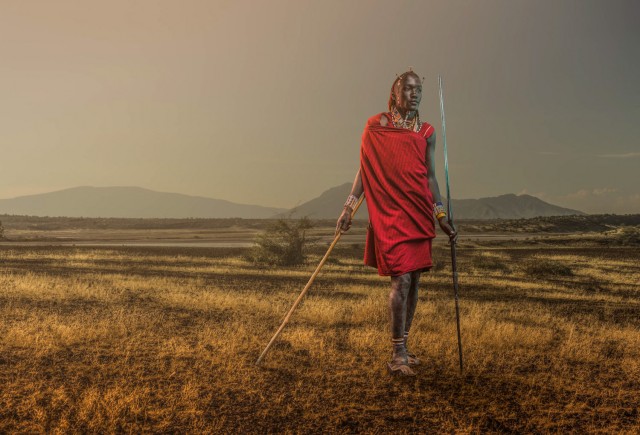Photography
People have been taking photographs in Africa almost since the invention of photography. Early images taken by foreign travelers reflect European views of Africa, while photos taken by Africans shed light on African ideas of beauty, identity, and art.
History
In the mid-1800s, Europeans who had mastered the complex technique of early photography documented their journeys to Africa. A member of explorer David LIVINGSTONE's 1858 expedition on the Zambezi River took some of the first photos of the African interior. Fascination with the exotic monuments of ancient Egypt drew other European photographers to the Nile River valley.
By the 1880s, photographic equipment had become more widely available and easier to use. Missionaries, colonial officials, and scientists working in Africa took photos for personal mementos, research projects, and exhibits. Some Europeans specialized in anthropological photography designed to sort the African population into racial and cultural types or categories. Sets of these pictures entered the collections of many museums.
From the late 1800s to the mid-1960s, European colonial governments in Africa used photography to advertise the success of their administrations. The rapid growth of photojournalism and documentary photography produced a flood of images from Africa after the 1920s. European and American photographers—as well as some Africans—recorded current events and social conditions around the continent. Although some photographers worked for colonial governments, many others worked for independent publications.
Some of the first non-European photographers in Africa were Indians, who operated photo studios in eastern Africa as early as the 1860s. Africans soon entered the business, opening studios or working as traveling photographers. At first, they specialized in portraits or group pictures of members of the upper class, such as teachers, priests, and clerks. By the 1940s photographers also were covering social and political events. At the same time, magazines in South Africa and Nigeria began publishing the work of African photojournalists. Some work from this period has gained recognition as fine art as well as a valuable record of African culture. In 1997, photos by Seydou Keita of Mali were published and exhibited in the United States and Europe.
Cultural Role
Local beliefs and values affected the practice of photography in Africa. At first, some Africans resisted having their pictures taken. They believed their souls and shadows could be stolen through magic, and photography appeared to be a magical art. This fear quickly faded, however. In some cases photography replaced earlier art forms. In Ghana, for example, people began taking photographs of the dead instead of making traditional pottery images in their honor. Elsewhere, people adopted photographs for use in ancestor worship, medicine, and magic. Some traditional healers use photos to diagnose illness, and the “love magic” practiced to bring back a lost lover often features the use of photos.
Photography also gained a place in social customs. In many areas, Africans welcome visitors to their home by presenting the family photo album. As elsewhere in the world, photography in Africa has become an important part of wedding feasts and other major celebrations. In some African cultures, the quantity and quality of photographs given to guests at a wedding demonstrates the host's standing in society. Africans also enjoy exchanging photos as reminders of events and as signs of friendship.

Style
Much of the photography in sub-Saharan Africa shares a common style. Nearly all photographs are images of people, rather than of landscapes and other subjects. They are usually formal pictures, with the subject in the center, facing forward. A person's entire body is usually included in the picture. Whereas Western photographers generally use techniques that emphasize depth and make the subject stand out from the background, most African photographers favor images that appear flat, with the subject blending smoothly into the background. Studio photography is highly popular in many African countries.
Studio owners provide backdrops, such as paintings of urban scenes or rooms filled with modern appliances. They also offer a wide range of props, such as royal ornaments, and items of Western and traditional clothing. African studio images are not intended to reproduce reality; they are ways of making a statement about one's standing in the world. (See also Art.)